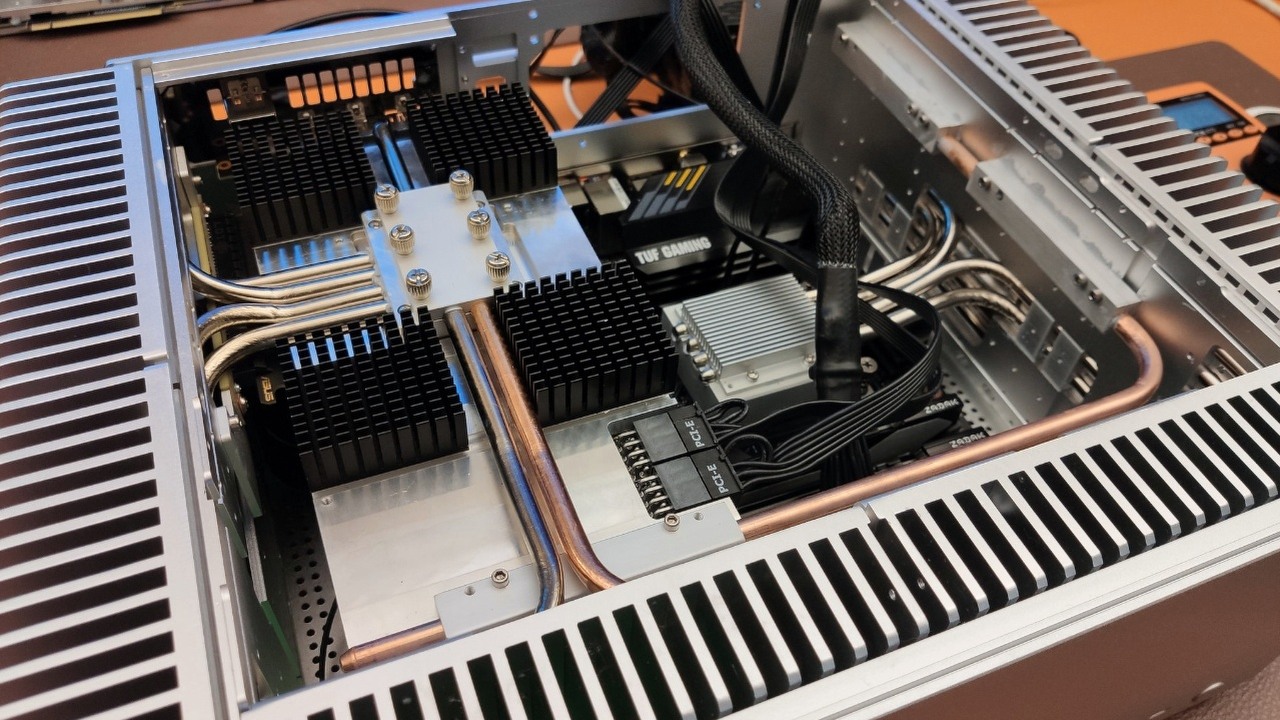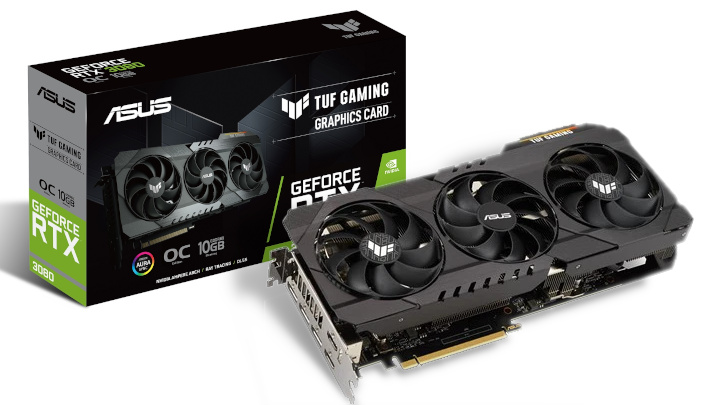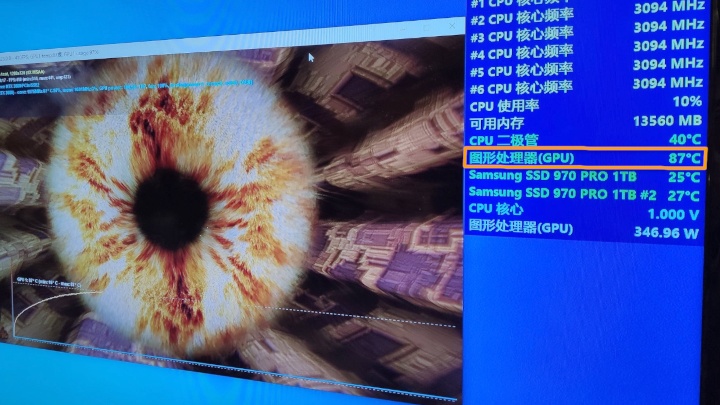Passive-cooling RTX 3080 Tested in Fanless PC
Nvidia's flagship GPU without fans? Turemetal's Mical Wong, a specialist in silent computers, tests a completely passively cooled kit with RTX 3080 and... get your fire extinguishers ready and let's go.

Maybe fire extinguishers won't be necessary after all. Mical Wong is the founder of Turemetal, a company specializing in passively cooled, noiseless computers. Based on his UP10 case he tested a set-up consisting of AMD Ryzen 5 5600X processor and a GeForce RTX 3080 graphics card. Of course we won't find a single fan on the list of its components. The whole thing was tested under load in FurMark and, contrary to appearances, no smoke detector alarms could be heard.

The Turemetal UP10 case is basically one big heat sink, full of heat pipes and dedicated heatspreaders. The GPU used in the test is an Asus model, the TUF Gaming RTX 3080, and the factory cooling has been replaced with a custom heat receiver connected by heat pipes to the heatsinks on the outside of the case. The power consumption of the whole thing is around 410 watts, as you can see from the pictures attached in the Twitter post:
Furmark's Burn-in test lasted just over 4 minutes, with the card warming up to 87 degrees in that time (video posted on YouTube). That seems like a lot, but it's still below the maximum temperature of this GPU, which is 93 °C. It's hard to say whether the GPU could have warmed up more if the test had lasted longer, because we can see in the graph that its temperature has stabilized. It's worth mentioning that the temperature in the room where the computer was tested was quite low - 13.6 °C (with 64% humidity). These are rather uncomfortable conditions for gaming.

It is not known in what mode the GPU was running during the test, but you can read in the picture the clocking was 1575 Mhz. Lower temperature could be achieved by further lowering its parameters by undervolting, for example. I think performance wouldn't suffer too much, and the complete lack of noise in some applications could be a significant advantage. Turemetal UP10 costs about $770 and RTX 3080 is even more expensive and still hard to find in shops, so the experiment turned out to be not only interesting, but also expensive.
0

Author: Arkadiusz Strzala
His adventure in writing began with his own blog and contributing to one of the early forums (in the olden days of Wireless Application Protocol). An electrical engineer by profession, he has a passion for technology, constructing and, of course, playing computer games. He has been a newsman and writer for Gamepressure since April 2020. He specializes in energy and space tech. However, he does not shy away from more relaxed matters every now and then. He loves watching science-fiction movies and car channels on YouTube. He mainly plays on the PC, although he has modest console experience too. He prefers real-time strategies, FPS and all sorts of simulators.
Latest News
- End of remote work and 60 hours a week. Demo of Naughty Dog's new game was born amid a crunch atmosphere
- She's the new Lara Croft, but she still lives in fear. Trauma after Perfect Dark changed the actress' approach to the industry
- „A lot has become lost in translation.” Swen Vincke suggests that the scandal surrounding Divinity is a big misunderstanding
- Stuck in development limbo for years, ARK 2 is now planned for 2028
- Few people know about it, but it's an RPG mixing Dark Souls and NieR that has received excellent reviews on Steam, and its first DLC will be released soon

